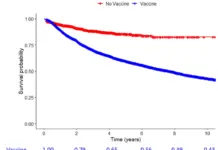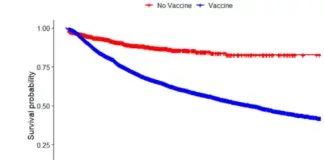**Let Us Learn!**
- Could you have had 1P36 gene deletion and not know it?
No. 1 P36 is a chromosomal disorder.Congenital – meaning you would be born with it. You would not suddenly develop this unless something in your body is deleting a gene, like Pfizer “vaccine” that is gene therapy. It is the #1 side effect listed in the FDA cumulative analysis of the Pfizer vaccine, 2021 in the appendix pages. Here is the link for curious minds who would like to read and discover if they have this challenge requiring genetic testing. If you, or your child, love ones, neighbors, are acting a little strange, well here is a clue. https://phmpt.org/wp-content/uploads/2021/11/5.3.6-postmarketing-experience.pdf
I’ll post the appendix image again on my next “X” post. It is important to know Who is Who and What is What.
- What does it look like?
**Manifestations of 1p36 Gene Deletion Syndrome**
1p36 deletion syndrome is recognized as the most common terminal deletion observed in humans. Below are the major clinical manifestations associated with this genetic condition:
A. **Developmental Delay/Intellectual Disability**:
– Ranges from moderate to severe.
– Affects cognitive and motor development.
B. **Expressive Language Deficiency**:
– Poor or absent ability to express language.
C. **Congenital Central Muscular Hypotonia**:
– Reduced muscle tone from birth.
D. **Brain Anomalies**:
– Structural abnormalities in the brain.
E **Brachydactyly/Camptodactyly**:
– Short fingers and toes.
– Permanently bent fingers.
F. **Short Feet**:
– Noticeably shorter feet.
G. **Characteristic Facial Features**:
– Straight eyebrows.
– Deep-set eyes.
– Midface hypoplasia (underdevelopment of the middle facial features).
H **Psychiatric Comorbidities**:
– Limited knowledge exists on comorbid psychiatric disorders.
– Includes disorders such as insomnia, oppositional-defiant disorder, and attention deficit/hyperactivity disorder (ADHD).
I **Effective Treatments**:
– Multidisciplinary approach is essential.
– Off-label use of melatonin for insomnia and methylphenidate for ADHD has shown good efficacy without adverse effects.
**Case Report Summary**:
– A four-year-old girl with a 1p36.33-1p36.32 deletion exhibited moderate intellectual disability, insomnia, oppositional-defiant disorder, and ADHD.
– Treatment over approximately 1.5 years included psychological/psychiatric assessment, day clinic/outpatient treatment, and follow-up.
– Interventions involved the use of melatonin and methylphenidate alongside parent-child interaction therapy.
This summary highlights the necessity for comprehensive diagnosis and treatment plans tailored to meet the complex needs of patients with 1p36 deletion syndrome.
The 1p36 gene deletion, also known as Monosomy 1p36, is a serious chromosomal condition that can significantly impact individuals’ health and development. This genetic syndrome, occurring in 1 out of 5,000 to 10,000 live births, is recognized as the most common subtelomeric deletion syndrome in humans. The syndrome results from a deletion on the short arm of chromosome 1 and was first reported in the early 1980s.
**Characteristics and Symptoms**
Identifying patients with monosomy 1p36 can be challenging due to the subtle or absent characteristic dysmorphic features. Common features of this syndrome include developmental delays, which are severe to profound in the majority of cases, hypotonia (low muscle tone), microcephaly (abnormally small head), and distinctive facial features such as midface hypoplasia (underdevelopment), broad nasal root, deep-set eyes, straight eyebrows, and a pointed chin. Developmental delays vary but are present in all individuals with this condition. Additional symptoms include brachydactyly (short fingers and toes), short feet, hypotonia, seizures, and hearing and vision problems.
Heart defects are also significant among patients with deletion 1p36. These can range from structural anomalies to functional defects like left ventricular noncompaction (LVNC), which can lead to dilated cardiomyopathy (DCM). The PRDM16 gene is primarily associated with DCM in 1p36 deletion patients, although other genes in this region may also contribute to this condition.
**Psychiatric Comorbidities**
There is limited knowledge about psychiatric disorders associated with 1p36 deletion syndrome and their effective treatments. A case report detailed the treatment of a young girl with 1p36.33-1p36.32 deletion, moderate intellectual disability, insomnia, oppositional-defiant disorder, and attention deficit/hyperactivity disorder. Treatments included the off-label use of melatonin for insomnia and methylphenidate for ADHD, which showed good efficacy without adverse effects. This highlights the need for multidisciplinary approaches in diagnosing and treating patients with complex genetic disorders like 1p36 deletion syndrome.
**Incidence and Phenotype Variability**
Studies indicate that 1p36 deletion syndrome has an incidence between 1/5,000 and 1/10,000 live births in the American population. Research involving a cohort of 86 patients in France aimed to evaluate the incidence and postnatal phenotype of 1p36DS. Findings revealed that the syndrome is characterized by typical craniofacial features, developmental delay/intellectual disability, hypotonia, epilepsy, cardiomyopathy, brain abnormalities, hearing loss, vision problems, and short stature. Cardiac abnormalities, brain malformations, and epilepsy were more frequent in distal deletions, while microcephaly was more common in proximal deletions. This research helps refine the understanding of 1p36DS, aiding in better management and follow-up for patients.
**Divine Order and the Golden Rule**
As we advance in technology and medicine, it’s crucial to ensure that our innovations align with ethical principles like the Golden Rule—treating others as we would like to be treated. By doing so, we can create a future where smart devices and medical treatments not only advance human health but also uphold the values of kindness, respect, and fairness.
In the face of such complex genetic conditions and their potential side effects, like those from the Pfizer vaccine as analyzed by the FDA in 2021, having faith and hope becomes essential. For many, this faith is found in spiritual beliefs, such as trusting in YESHUA for eternal life and peace. This belief provides comfort and perspective, reminding us that while we strive to improve our present conditions, our ultimate hope lies in something greater.
Remember how you wanted no guns, less cars, and those 15 minute/Smart Cities?
Well here is your chance!. After you have your genes tested for levels of transfection, you could win the prize of getting a nice place in an environment that is safer for everyone.
You may need to turn in the keys for that vehicle, hand over those guns, and get into a Smart City that has your best interest in mind. Many cities are prepared to take in such souls where you can safely walk short distances to nearby locations to accomplish your daily tasks. Without remedy, you will transfect, and the longevity studies (length of life) shortened by the reality of the situation.
**References:**
1. Chromosome Disorder Outreach, Inc. (chromodisorder.org)
2. Briegel, W., & Scarselli, M. Psychiatric Comorbidities in 1p36 Deletion Syndrome and Their Treatment—A Case Report. PMC (nih.gov).
3.https://www.c40knowledgehub.org/s/article/Mapped-Cities-with-a-climate-action-plan?language=en_US
4. We use AI and ancient written text too, in addition to the actual science articles. You may believe what you want to believe. Nobody cares unless your actions indicate neurological challenges that pose a threat to society or yourself.
From almscodex.org
Disclaimer: We at Prepare for Change (PFC) bring you information that is not offered by the mainstream news, and therefore may seem controversial. The opinions, views, statements, and/or information we present are not necessarily promoted, endorsed, espoused, or agreed to by Prepare for Change, its leadership Council, members, those who work with PFC, or those who read its content. However, they are hopefully provocative. Please use discernment! Use logical thinking, your own intuition and your own connection with Source, Spirit and Natural Laws to help you determine what is true and what is not. By sharing information and seeding dialogue, it is our goal to raise consciousness and awareness of higher truths to free us from enslavement of the matrix in this material realm.
 EN
EN FR
FR


























